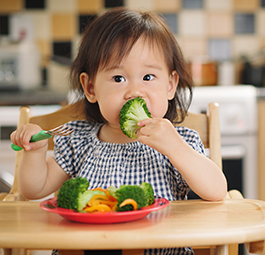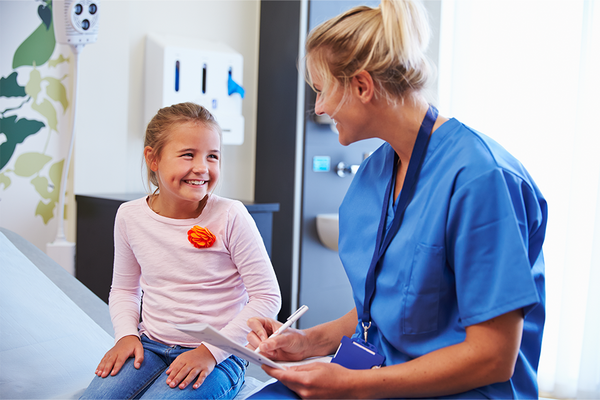Food Allergy Diagnosis

Feeling overwhelmed? We know it can be a big adjustment to live with food allergies. We’re here to guide you through the first things you need to know after a new food allergy diagnosis. You’ll find evidence-based, practical information on how to prevent and treat food allergy reactions. We also offer a wide range of resources to help you feel confident about managing your child’s food allergies.
A food allergy occurs when the body’s immune system sees a certain food as harmful and reacts by causing one or more symptoms. This is known as an allergic reaction. Foods that cause allergic reactions are called allergens. Allergic reactions usually occur after your child eats a food to which they are allergic.
Allergens
The most common foods to cause allergic reactions in the U.S. are eggs, milk, peanuts, tree nuts, sesame, soy, wheat, shellfish, and fish. Learn how to read labels and identify your child’s allergens.
Be Aware of Food Allergy Symptoms
The type of symptoms may change from one reaction to the next. Sometimes allergy symptoms are mild. Other times, symptoms can be severe and result in a serious allergic reaction called anaphylaxis [anna-fih-LACK-sis]. Anaphylaxis is an allergic emergency that can cause serious, potentially life-threatening complications. An allergic reaction to a food can involve one or more symptoms of the skin, mouth, eyes, lungs, heart, gut, and brain. Some symptoms of an allergic reaction include:
- Skin rashes and itching and hives
- Swelling of the lips, tongue, or throat
- Shortness of breath, trouble breathing, wheezing (whistling
sound during breathing) - Dizziness and/or fainting
- Stomach pain, vomiting, and diarrhea
- Feeling like something awful is about to happen
Your child’s doctor will give you a complete list of possible symptoms. This list of symptoms is also on your written Anaphylaxis Action Plan.
Anaphylaxis
Be Prepared for Anaphylaxis
Work with your child’s health care team on how to recognize the signs and symptoms of anaphylaxis and how to treat it. Here’s how you can be prepared:
- Have a written anaphylaxis action plan, also called a food allergy emergency care plan. Your child’s doctor will give you this step-by-step plan on what to do in an emergency.
- Learn how to give your child epinephrine. It’s the only treatment that will stop anaphylaxis.
- Epinephrine is safe and comes in an easy-to-use device called an auto-injector. It injects a single dose of medicine when you press it against your child’s outer thigh. Your child’s health care team will show you how to use it.
- Teach people who spend time with your child how to use the auto-injector.
- Consider having your child wear or carry a medical alert ID to let other people know of the allergy.
Epinephrine
If you or your child have severe food allergies, you need to have epinephrine nearby at all times. There are different types of epinephrine devices available in the U.S. – learn and practice how to use your device.













